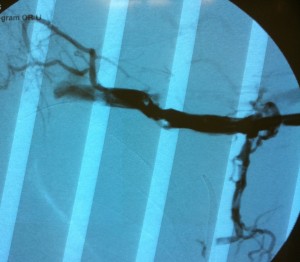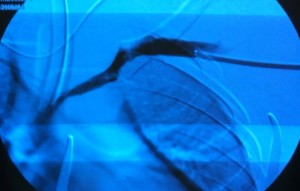Understanding Management of Deep Vein Thrombosis
Traditional management of deep venous thrombosis has been to initiate anticoagulation with Heparin or a long acting substitute while starting an oral form of blood thinner, usually Coumadin (Warfarin). This would prevent the development of further clot and reduce the chance of clot breaking free to travel to the lungs or heart. This latter condition is referred to as Pulmonary Embolus and can be fatal. Many patients, especially those with clot involving the major veins above the groin (iliac, vena cava) develop long term disability due to swelling pain and impaired venous return to the heart. Evidence and clinical practice guidelines now support a more aggressive attempt to eliminate or reduce the clot present in the veins mentioned above by an invasive procedure carried out through a catheter inserted either behind the knee or through the groin. By eliminating the clot the risk of developing late complications can be reduced in many patients. When the clot is located only in the thigh or calf these procedures hare not necessary and have no major advantage at this time.
The treatment of this problem is time sensitive and chances of success diminish dramatically after 2 weeks. Early consultation and assessment with ultrasound and CAT scan venography of the abdominal and pelvic veins is necessary. The following is an example of DVT pre and Post treatment. This example is from the upper extremity while most occur in the legs.

